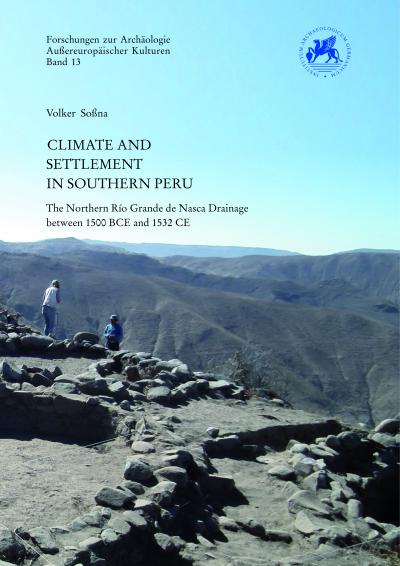Climate and settlement in Southern Peru: The Northern Río Grande de Nasca drainage between 1500 BCE and 1532 CE
https://doi.org/10.34780/e4b0-b3e6
Über dieses Buch
Die Kulturen, die im Laufe der Jahrtausende an der trockenen peruanischen Südküste zwischen den Tälern von Chincha und Yauca blühten, hatten einen entscheidenden Einfluss auf die Geschichte der zentralen Anden im Allgemeinen. Bedeutende lokale Kulturen wie Paracas (ca. 800 – 250 v. Chr.) und Nasca (ca. 250 v. Chr. – 650 n. Chr.) sind für Felsritzungen und Bodenzeichnungen bekannt, aber auch für die außergewöhnlichen Fertigkeiten ihrer Handwerker bei der Herstellung hochwertiger Textilien und Keramiken. Die Region spielte auch eine wichtige Rolle bei der Gründung und Ausdehnung der andinen Reiche der Wari (ca. 650 – 1000 n. Chr.) und der Inka (ca. 1470 – 1532 n. Chr.).
Trotz der Bedeutung der Südküste ist relativ wenig über ihre Siedlungsgeschichte bekannt. Dank eines archäologischen Langzeitprojekts des Deutschen Archäologischen Instituts liegen nun detaillierte Daten für den nördlichen Teil des Einzugsgebiets des Río Grande de Nasca vor, eine Region, die sich aufgrund der Fülle an vergleichsweise gut erhaltenen archäologischen Überresten gut für eine Fallstudie eignet. Auf der Grundlage dieser Daten werden in diesem Band 3.000 Jahre Siedlungsgeschichte rekonstruiert.
Die Siedlungsmuster von zehn aufeinanderfolgenden Kulturphasen zeigen erhebliche Veränderungen in der Siedlungshierarchie und der Bevölkerungsentwicklung. Zudem verlagerten sich die Siedlungsschwerpunkte. Aufgrund der ariden Bedingungen in dieser Region haben bereits geringe Schwankungen in den absoluten Mengen und der innerjährlichen Verteilung der Niederschläge erhebliche Auswirkungen auf das landwirtschaftliche Potential. Es wird daher der Frage nachgegangen, ob vergangene Klimaschwankungen der Hauptauslöser für Veränderungen im Siedlungsverhalten gewesen sein könnten.
Dazu werden Analysen archäologischer Daten mit klimageschichtlichen Studien verglichen, die auf signifikante Veränderungen im Niederschlagsverhalten schließen lassen. Zeitliche Korrelationen zwischen wichtigen Entwicklungen in der Besiedlung und im Klima könnten auf einen kausalen Zusammenhang zwischen beiden Phänomenen hinweisen. Auch wenn die begrenzte und uneinheitliche Auflösung der Daten eine eindeutige Bewertung erschwert, scheint der allgemeine Trend darauf hinzudeuten, dass dies in einigen spezifischen Zeiträumen tatsächlich der Fall war. Die meisten größeren Siedlungsverschiebungen und demografischen Instabilitäten stehen jedoch in keinem zeitlichen Zusammenhang mit eindeutig nachweisbaren Klimaveränderungen.
Kapitel
-
Foreword
-
Preliminary Note
-
Acknowledgements
-
General Notes
-
1 Introduction
-
2 Nature
-
3 Culture
-
4 Culture Meets Nature
-
5 Archaeological Settlement Data – Acquisition, Classification, and Analytical Methods
-
6 Results: Diachrone Settlement Pattern, 1500 BCE–1532 C.E
-
7 Discussion: Settlement, Migration, and Climate Change
-
8 Conclusions: The Impact of Climate Change on Settlement Behavior
-
Abstract
-
Resum
-
Zusammenfassung
-
List of Figures
-
List of Tables
-
List of Maps
-
Glossary: Terms of Spanish and Quechua Origin
-
List of Abbreviations
-
References
-
Content of Supplement DVD




